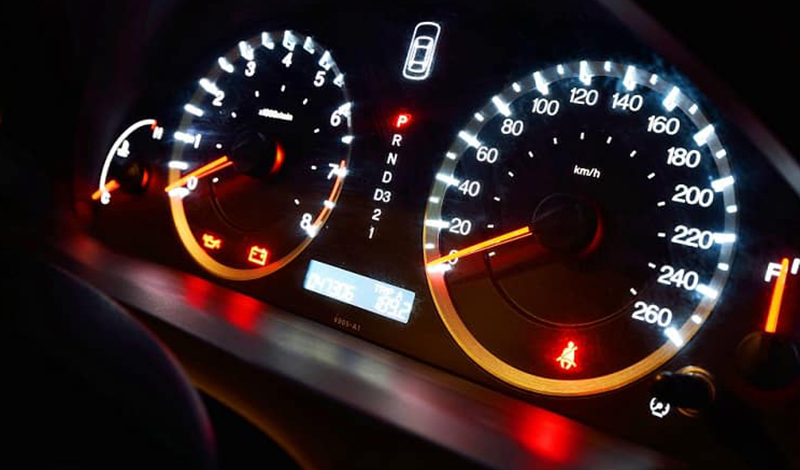Understanding Volkswagen Dashboard Warning Lights: A Comprehensive Guide
Driving a Volkswagen offers a blend of comfort and efficiency, but the sudden illumination of dashboard warning lights can interrupt this experience, prompting immediate attention and action. These lights are not mere suggestions; they’re crucial communicators of your vehicle’s condition, signalling when intervention is necessary to avert potential harm or costly repairs. Understanding these warnings ensures not only the longevity of your vehicle but also the safety of its occupants.
A proper grasp of what each symbol represents enables swift decision-making. Whether it’s the urgency of a flashing engine light, the caution of a tire pressure alert, or the advisement of a service reminder, each has a distinct priority and response. By adhering to their guidance, you maintain your Volkswagen’s performance and reliability.
This introduction serves as the gateway to deciphering your Volkswagen’s language of lights. It is tailored for clarity, devoid of technical jargon, ensuring you, the driver, are equipped with knowledge that’s both actionable and accessible. As you continue, you’ll gain insights into the most common dashboard alerts, empowering you to respond with informed confidence when they arise.
Decoding the Check Engine Light

When the Check Engine Light illuminates, it communicates a spectrum of potential engine troubles. This symbol, shaped like an engine, serves as an alert to assess engine function. It may activate for reasons as simple as a loose fuel cap or as complex as an emissions system failure. A steady light typically indicates a non-critical issue, but one that requires attention to avoid further complications. On the other hand, a flashing light conveys urgency, hinting at severe issues such as misfires damaging the catalytic converter.
Understanding this indicator’s message is pivotal. Drivers should not overlook this signal. Instead, consider it a prompt to seek a diagnostic evaluation. Modern Volkswagen vehicles possess onboard diagnostics, which facilitate precise issue identification through error codes. These codes, when interpreted by a technician, unveil the root cause, allowing for targeted interventions.
Early response to the Check Engine Light can mitigate the risk of escalated engine damage, safeguarding both vehicle performance and longevity. Thus, at the sight of this warning, a consultation with a skilled mechanic or an immediate check of the vehicle’s diagnostic system is advisable. Such preemptive measures ensure reliability and maintain the engine’s integrity.
The Importance of the Oil Pressure Warning
The oil pressure warning light, an icon resembling a dripping oil can, signals critical lubrication issues within your Volkswagen’s engine. Recognizing this light’s activation is crucial, as it points to oil pressure that is insufficient for optimal engine performance and may signify a potential drop in lubrication. The absence of adequate oil pressure endangers the engine, risking friction and overheating of its internal components, which can lead to severe damage or failure.
Immediate attention to this warning light involves checking the oil level and ensuring it meets the recommended specifications. Should the light persist, it’s imperative to seek a professional diagnosis, as this may indicate a more complex issue, such as a failing oil pump or blockage within the oil delivery lines. Driving with this light illuminated risks escalating repair costs and engine deterioration.
Adherence to the oil pressure warning not only preserves the intricate workings of your Volkswagen engine but also upholds its longevity and reliability. Proactive management of oil levels and pressure is indispensable for maintaining the health of your vehicle’s engine, safeguarding your investment, and ensuring continued road safety.
Temperature Warning Light Explained
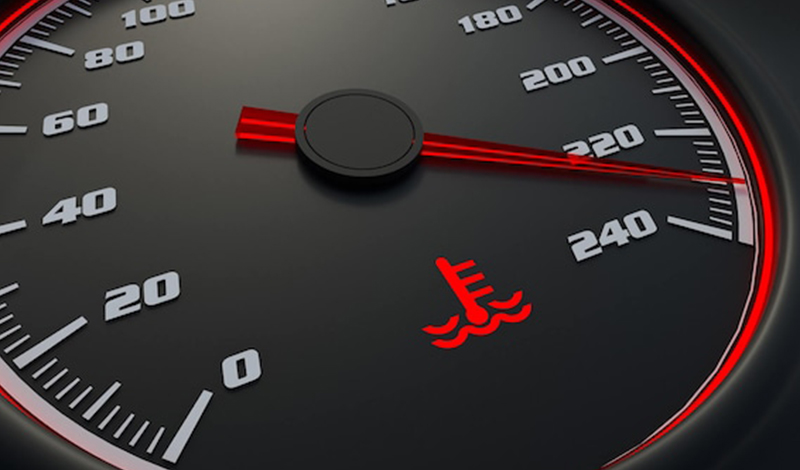
The Temperature Warning Light, depicted as a thermometer immersed in fluid, serves as a critical alert. It indicates that your Volkswagen’s engine temperature has exceeded normal limits. This escalation can stem from various malfunctions, such as coolant level depletion, radiator issues, or thermostat failure. Immediate action is required when this light illuminates to prevent engine damage.
Cease driving and switch off the engine to allow it to cool. Investigate coolant levels once the engine has reached a safe temperature, and replenish if necessary. Persistent activation of this light, despite adequate coolant levels, suggests a more complex issue that necessitates professional diagnosis. Overlooking this light can result in costly repairs and potentially endanger vehicle occupants due to the risk of engine failure. Regular maintenance checks, including coolant system inspections, are prudent measures to avoid the occurrence of overheating. Adherence to these preventive practices ensures the longevity and reliability of your Volkswagen’s engine system.
Brake System Warning Light: Ensuring Vehicle Safety
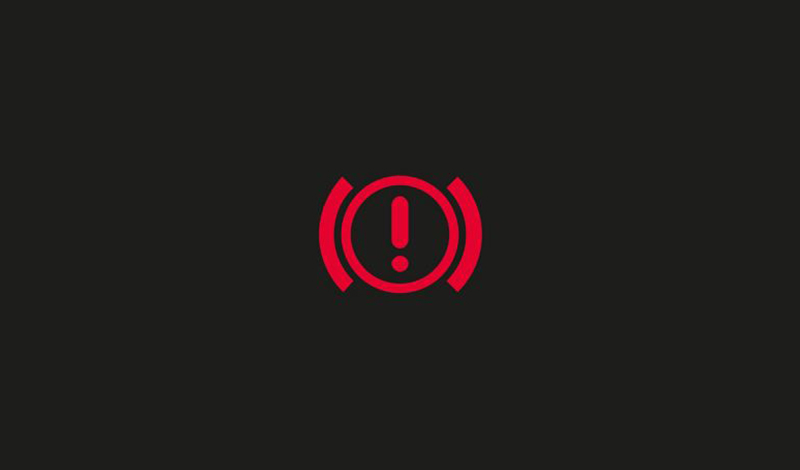
The Brake System Warning Light, characterized by an exclamation mark enclosed within a circle, serves as a critical messenger indicating potential brake system issues. This light’s activation demands immediate attention, as it relates to the vehicle’s fundamental safety mechanisms. The causes for its illumination are manifold; it may reflect concerns as simple as low brake fluid levels or as complex as anti-lock braking system malfunctions.
Responding to this light involves checking the brake fluid, which is pivotal for proper brake function, and inspecting the brake pads for wear. If the light persists, it signifies a deeper issue within the braking system, necessitating professional diagnostic services. Notably, the brake system light may also glow alongside the ABS light, which underscores a separate but related issue within the anti-lock braking system itself, further emphasizing the need for a thorough inspection.
For Volkswagen drivers, this light not only signifies a condition that requires immediate rectification but also acts as a beacon, urging the maintenance of the vehicle’s integrity and the safety of its occupants. It is essential to address any brake system warnings promptly to maintain optimal stopping power and ensure on-road safety.
Understanding the Airbag Indicator
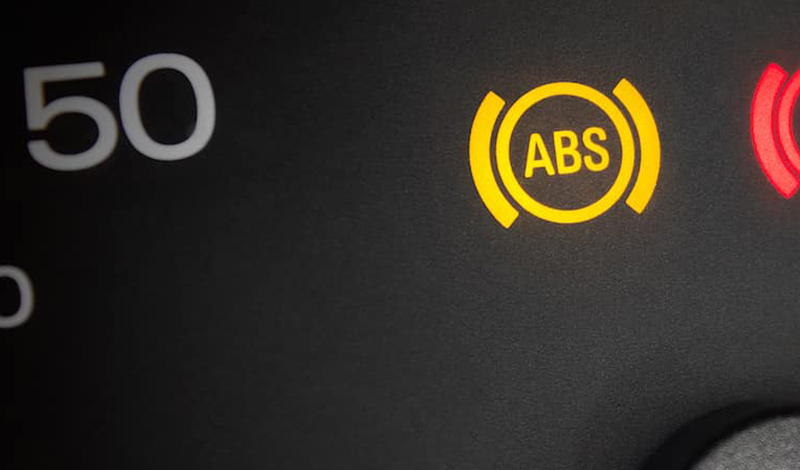
The Airbag Indicator, depicted as a seated figure with a ballooning circle in front, serves as a critical alert within Volkswagen’s diagnostic system. When this icon is illuminated, it signifies a potential malfunction in the airbag system, a key component of the vehicle’s safety network designed to deploy in the event of a collision. The presence of this warning necessitates an immediate system evaluation by a qualified technician.
Driving with an active airbag warning compromises passenger safety, as it may indicate that the airbags will not deploy effectively in a crash. Drivers must observe this alert and seek a professional inspection as soon as possible. This light may also co-occur with other indicators, which can provide additional context for the nature of the fault.
In maintaining vehicle integrity and occupant protection, the Airbag Indicator should never be disregarded. It acts as a sentinel, urging the driver to undertake necessary safety checks. Addressing airbag warnings not only assures compliance with road safety regulations but also fortifies the vehicle’s readiness to protect its occupants in the unforeseen event of an accident.
Battery Charge Alert: Understanding Your Volkswagen’s Power System
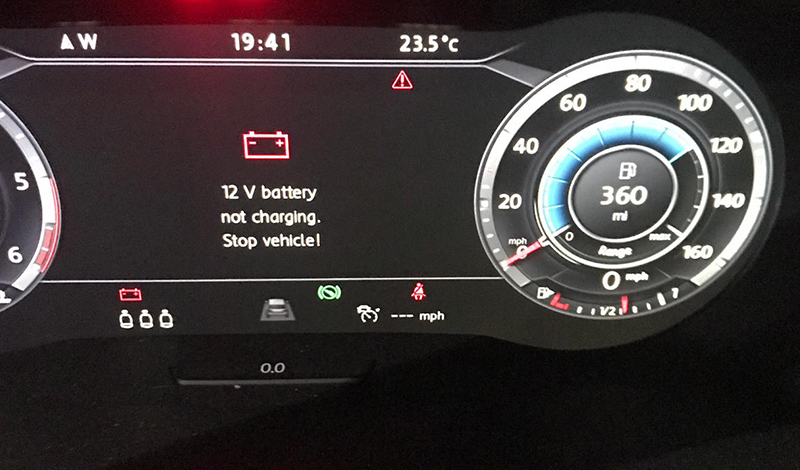
The battery charge warning, depicted as a battery with a positive and negative sign, signals a charging system error. Essential for the car’s electrical functions, the battery’s proper charge is crucial. This light’s activation necessitates immediate attention to prevent the vehicle’s electrical failure and ensure reliability.
When illuminated, this alert often signifies an alternator fault or a connection issue within the charging system. The alternator’s role – converting engine power into electrical energy and replenishing the battery – is pivotal. Should the battery lose charge, it compromises vehicle operation, affecting the starter motor function and the electrical system’s integrity.
Drivers should interpret this alert as a directive for urgent evaluation. The initial step involves inspecting battery terminals for corrosion or loose connections. If these components are intact, further diagnosis by a qualified technician is advisable. They will assess the alternator’s condition, the battery’s health, and the entirety of the charging system.
Addressing the battery charge alert promptly can prevent a scenario where the vehicle ceases to function, ensuring continuous readiness and operational security. Regular maintenance checks can also preempt such warnings, contributing to the vehicle’s enduring performance and driver peace of mind.
Traction Control and Stability Warning Lights
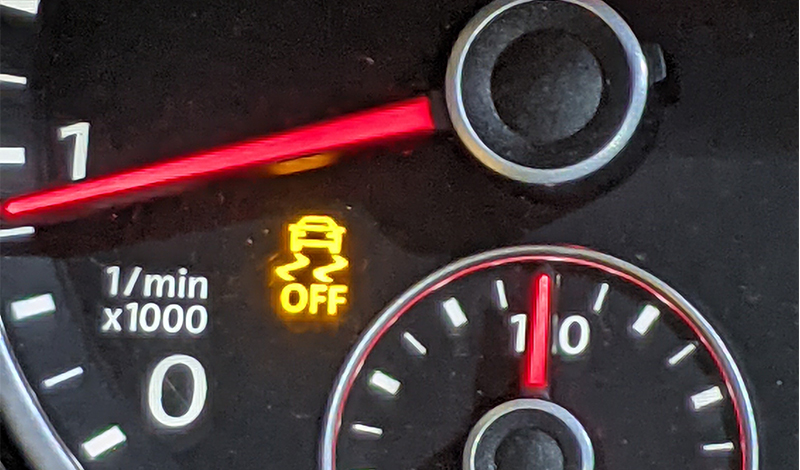
The illumination of the Traction Control and Stability Warning Lights signals a potential divergence from optimal driving conditions, where the vehicle’s grip on the road might be compromised. These symbols, typically represented by a car trailed by skid marks, may activate during slippage or when the vehicle’s stability system engages to maintain traction. When these lights appear, they indicate that the system is operational and working to preserve the vehicle’s steadiness, or they may warn of a malfunction within the traction or stability control systems.
Maintaining effective traction is crucial for the safe manoeuvrability of the vehicle, especially under adverse weather conditions or on uneven terrain. The stability system, likewise, is designed to assist in preventing skids or spins during abrupt turns or sudden movements. Should these lights remain lit, it is an immediate prompt for drivers to exercise caution and to seek a diagnostic check to ensure the systems’ integrity is intact.
Ensuring these systems function correctly is non-negotiable for driving safety. Prompt attention to these warnings can prevent more significant issues that may affect the vehicle’s handling and the safety of its occupants. It is advisable to refer to the vehicle’s manual or seek professional assistance to address any concerns related to these critical warning lights.
Tire Pressure Monitoring System (TPMS) Alert

The Tire Pressure Monitoring System (TPMS) alert, symbolized by an exclamation mark inside a tire profile, serves as a critical sentinel for tire inflation levels. This system vigilantly monitors the air pressure within your Volkswagen’s tires, ensuring they remain within the optimal range. Proper inflation is more than just a measure for maintaining tire integrity—it influences fuel efficiency, vehicle handling, and safety.
When the TPMS light illuminates, it signifies a deviation from the recommended pressure, necessitating a prompt check. Underinflated tires may compromise vehicle stability, increase tire wear, and potentially lead to tire failure, while overinflation can result in decreased traction and uneven tire wear.
Responding to the TPMS alert involves adjusting the tire pressure to Volkswagen’s prescribed specifications, a straightforward act that upholds vehicular health and passenger safety. Regular tire pressure checks, even when the TPMS light is not lit, can pre-emptively maintain tire longevity and performance. Always refer to the vehicle’s manual or a professional service provider to ensure accurate pressure levels and to address any TPMS system malfunctions.
Service Vehicle Soon: Scheduling Routine Maintenance
The ‘Service Vehicle Soon’ indicator, often represented by a wrench symbol or the simple command ‘Service’, acts as a reminder for scheduled vehicle maintenance. This alert, integral to your Volkswagen’s health, underscores the necessity of regular check-ups, directly influencing the vehicle’s longevity and reliability.
When illuminated, this signal denotes that your car has reached a service interval, as determined by the manufacturer’s guidelines. The alert may encompass oil changes, tire rotations, brake inspections, and other routine checks vital for ensuring optimal performance and safety. Neglecting this signal can lead to diminished efficiency, higher operational costs, and increased wear and tear.
Addressing this warning promptly upholds the vehicle’s performance metrics and helps maintain its value. Consulting the owner’s manual provides specific maintenance schedules while a certified mechanic can deliver expert service. Vehicle owners need to recognize this prompt, aligning service actions with the indicator to forestall potential issues. Responsiveness to the ‘Service Vehicle Soon’ light ensures your Volkswagen remains reliable, secure, and enjoyable to drive.
Conclusion: Taking Action
Promptly addressing dashboard warnings ensures vehicle integrity and occupant safety. Volkswagen’s array of dashboard signals, from the Check Engine to the Tire Pressure light, requires driver awareness and swift action. A lit indicator is a call to investigate, not to ignore. Engaging with these alerts can mean the difference between a minor repair and a major overhaul.
Adhering to these signals’ guidance extends beyond maintaining mechanical performance. It encompasses a commitment to safety and efficiency. Regular vehicle servicing and timely attention to dashboard warnings sustain the vehicle’s health and safeguard the driving experience. Drivers who heed these alerts not only preserve the lifespan of their Volkswagen but also uphold a standard of driving safety.
